Mike was three weeks away from closing his family bakery when he called us.
His voice cracked over the phone as he said, “I’ve tried everything. Maybe it’s just not meant to be.”
Six months later, he sent us a photo of his new employee badge. He’d hired his first assistant.
The Results: 45% revenue increase for a family-owned bakery in Ohio, 60% more bookings for a Portland & New York design studio, and 55% more stays at a Rocky Mountains campground near Yosemite.
These small business email marketing success stories prove that storytelling beats feature lists. Here’s how three companies used emotional marketing case studies as inspiration to create email templates that turn browsers into buyers with proven techniques you can implement immediately.
The Story of Mike’s Bakery: From Closing Down to 45% Growth
Mike Thompson, owner of a local family-owned bakery in Ohio, had been sending the same email for two years: “Fresh bread available. 10% off today.” His 2,000 subscribers ignored him completely. Open rate: 12%.
“My wife keeps asking when I’m going to admit defeat,” Mike told us during our first meeting. “The bills are piling up. I can’t compete with the big-box chains like Kroger or Walmart.”
What We Saw That Mike Didn’t
Mike wasn’t selling bread. He was selling the feeling of Sunday morning at Grandma’s house. But his emails read like a grocery store flyer.
We spent a morning in his bakery, watching customers. They didn’t just buy croissants; they lingered. They talked to Mike about their kids, their jobs, and their weekends. They belonged there. That’s when we knew what his emails were missing.
The Template That Changed Everything
We completely rewrote Mike’s welcome email:
“Welcome to the aroma of mornings.
You haven’t just signed up; you’ve stepped into a warm bakery full of handmade stories and fresh-baked inspiration.
Inside every email: cozy stories, exclusive treats & morning-only specials.
Thanks for waking up with us.”
See how top brands create welcome emails like Mike’s in Best Welcome Email Examples: 5 Proven Strategies.
Three Months Later
The revenue jumped 45% in just three months, but more importantly, the real moment came when a customer walked in and said, “I’m here for that rosemary sourdough you wrote about yesterday.”
“That’s when I knew,” Mike told us. “They weren’t just buying bread. They were buying into our story, and that’s what we’ve been missing all along.”
Today, Mike opens at 5 AM and sells out by noon. He’s planning a second location.
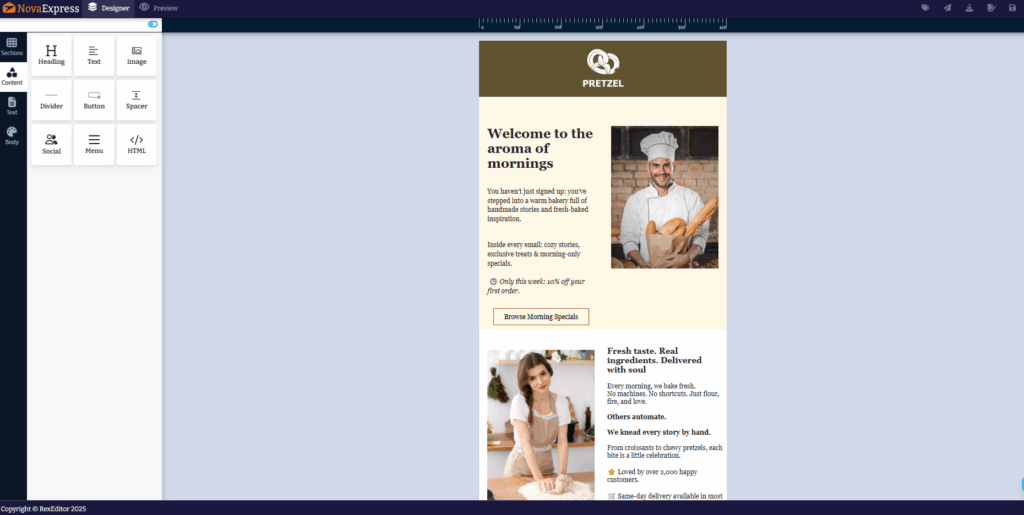
Anna’s Design Studio: How We Boosted Bookings by 60%
Anna Peterson, an interior designer serving Portland clients and New York apartment makeovers, had a stunning portfolio. Her design work was magazine-worthy. However, potential clients kept saying, “We’ll think about it,” and never followed up.
Conversion rate from email to consultation: 15%.
“I don’t understand,” Anna said. “I show them beautiful spaces. I explain my process. What else do they want?”
The Problem Hidden in Plain Sight
Anna was showing people pretty rooms. But they didn’t want pretty rooms; they wanted to feel different in their own space.
During our consultation, Anna mentioned a recent client who cried when she saw her finished living room. “She said it was the first time her house felt like home.”
That story never made it into Anna’s emails.
The Template That Spoke to Hearts
We scrapped Anna’s portfolio PDFs and created experience-focused templates:
Welcome to Fira Studio.
Where design begins with intention.
Beauty isn’t loud; it lingers.
Each piece at Fira Studio is crafted to bring presence, calm, and color into your daily life.
Let’s build something timeless, together.
The Turnaround
Within 60 days, consultation bookings increased by 60%. But more importantly, the conversations changed.
“Now they come in and say things like, ‘I want my home to feel like that story you shared,'” Anna reports. “They’re not buying design services. They’re buying the feeling of coming home.”
Anna’s average project value rose by 40%. Today, Fira Studio isn’t just a design studio.
It’s a place people trust to create spaces that don’t just look right, they feel right.
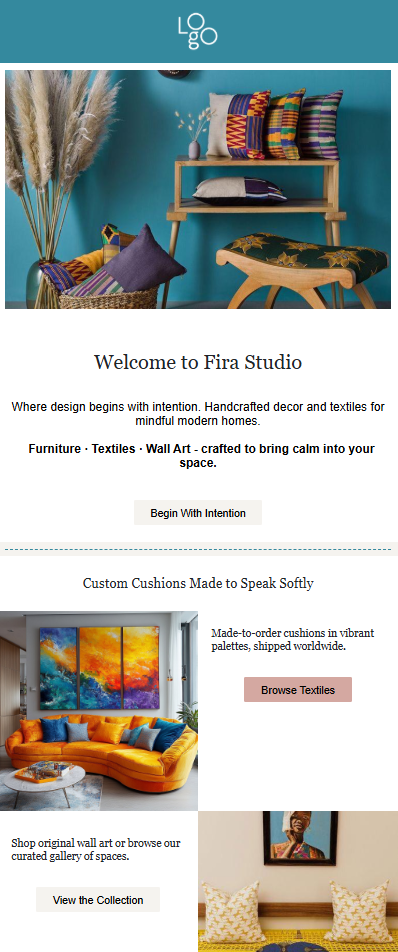
Steve’s Campground: Fighting Big Brands With a Small Business Story
Steve Wilson owned 40 acres of mountain paradise in the Sierra Nevada, not far from Yosemite. But families were choosing Holiday Inn over the simple magic of sleeping under the stars.
“People have gotten soft,” Steve complained. “Nobody wants real adventure anymore. It’s all about WiFi and room service now.”
Booking rate: 18%. It wasn’t even enough to keep the lights on.
What Steve Missed
Steve was competing on amenities with businesses that had million-dollar budgets. He was trying to be a hotel in the woods.
But his real competition wasn’t Holiday Inn. It was Netflix, smartphones, and busy schedules pulling families apart.
The Template That Redefined Camping
We stopped selling tent spots and started selling transformation: “Where chaos ends, calm begins. Nature doesn’t shout; it whispers, and suddenly, everything makes sense. Sleep soft. Dream big. Let nature host. Let your soul rest. Your retreat starts here.”
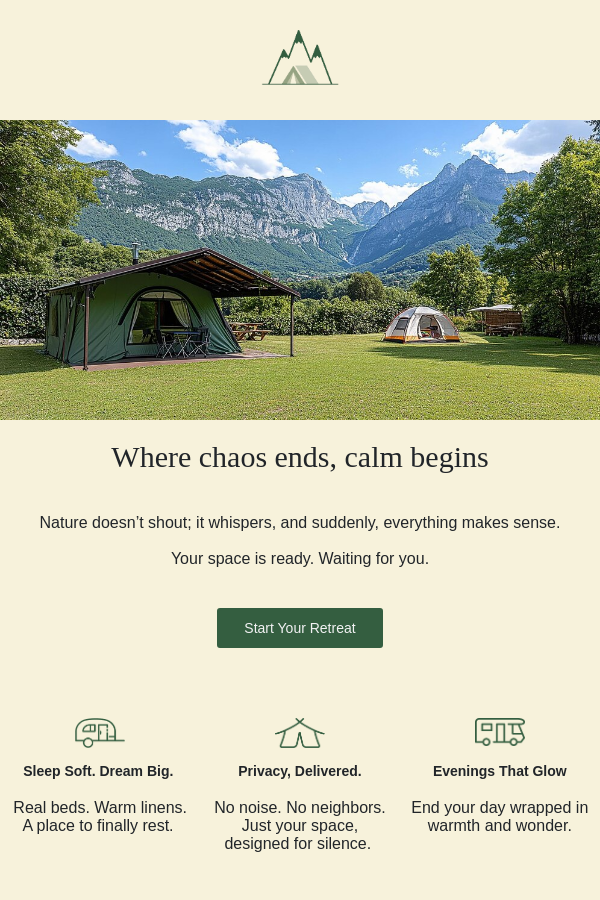
What We Learned: The Emotional Core of Every Winning Campaign
Our key discovery after hundreds of cases: people don’t buy products; they buy better versions of themselves.
Mike’s customers weren’t buying bread; they were buying a sense of belonging to something warm and authentic. Anna’s clients didn’t need interior design; they needed their homes to finally reflect their true selves. Steve’s family wasn’t seeking camping; it wanted to reconnect with each other away from digital distractions.
This insight reveals the fundamental difference between failing and successful email templates. Bad ones list features like “Fresh bread daily” or “Professional design services.” Good ones paint emotional pictures like “The aroma of mornings,” “Beauty that lingers,” and “Where chaos ends, calm begins.”
According to HubSpot’s research, emails with storytelling elements consistently generate dramatically higher engagement and conversion rates than feature-focused campaigns. Our case studies prove this principle works across all industries.
These results align perfectly with Ogilvy’s timeless principles: consistently focusing on customer benefits rather than product features drives higher conversions. If you’re just starting out, our guide on how to start your first email campaign provides the foundational steps these businesses used.
Frequently Asked Questions About Email Marketing Case Studies
What makes an email marketing case study effective?
The most effective email marketing case studies focus on emotional transformation rather than technical features. They show specific results (like our 45-60% increases), include real customer quotes, and reveal the psychology behind what works.
How do stories improve email conversion rates?
Stories in email marketing work because they help readers visualize themselves experiencing the same transformation. When Mike’s customers read about “the aroma of mornings,” they imagine belonging to something special, not just buying bread.
What kind of businesses benefit from emotional storytelling in emails?
Every business can benefit from emotional email marketing, but it’s especially powerful for:
- Local businesses competing against chains (like Mike’s bakery)
- Service-based businesses that struggle to show tangible results (like Anna’s design studio)
- Experience businesses fighting price-based competition (like Steve’s campground)
The most effective email marketing strategies combine emotional storytelling with proven copywriting techniques. For more advanced tactics, check out our 9 copywriting tricks that sell to enhance your template effectiveness even further.
Can small businesses really compete with big brands using email storytelling?
Yes. These email marketing case studies prove that small businesses often have an advantage; they can be more personal, authentic, and emotionally connected than large corporations with automated systems. The key is understanding your target market and crafting messages that resonate with their specific needs.
We could have written about features like Mike’s organic flour or Anna’s design credentials. Instead, we focused on how their customers felt: welcomed, understood, and transformed.
The Secret Behind Successful Email Templates
None of these businesses needed better products. Mike’s bread was already incredible. Anna’s designs were stunning. Steve’s campground was beautiful. The real secret behind every successful campaign is focusing on how your customers feel.
Every email template that converts does one thing: it helps people imagine a better version of their life. Somewhere in your customer interactions is the story that will transform your email marketing. It might be:
- The customer who teared up using your product
- The problem you solve that nobody else talks about
- The moment you realized why you started your business
- The transformation your customers experience but never mention
That story is your email template goldmine.
Start Writing Your Own Success Story
These email marketing case studies prove that when you tell better stories, you don’t just sell products: you sell transformations. Every successful campaign we’ve analyzed follows the same pattern: they focus on how customers feel, not what they get.
But here’s the challenge: most business owners know they should tell stories, but they don’t know which story to tell or how to tell it effectively. That’s exactly where we come in.
At Nova Express, we’ve helped dozens of businesses discover their unique story and transform it into email templates that actually convert. Our platform doesn’t just give you generic templates: it helps you craft personalized campaigns that speak directly to your customers’ emotions and desires.
Your customers are scrolling through boring emails right now, waiting for someone to understand them. To speak their language. To solve their real problems with a genuine connection instead of generic promotions.
Ready to discover your story? Get started with Nova Express for free today and see how your next email could become your best-performing campaign yet. Join Mike, Anna, Steve, and other business owners who transformed their results with the power of storytelling.
About the author
Serafima Osovitny is a content and email marketing specialist at Nova Express. With over 10 years of experience in content creation and a cross-industry perspective, she shares insights about email marketing and e-commerce. In her free time, she enjoys traveling and exploring bookstores. Follow her on Twitter: @OSerafimaA.







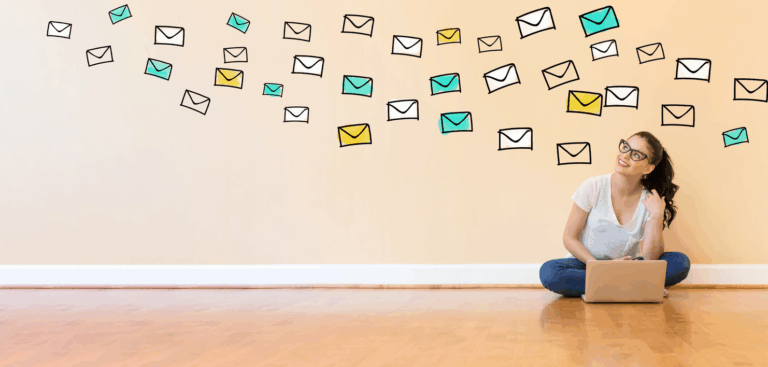
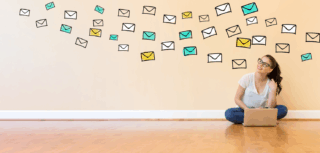
Leave a Comment